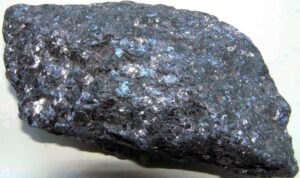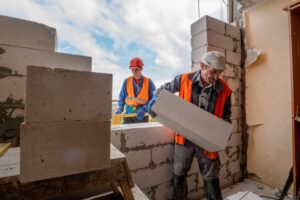
Global lead and zinc production will exceed demand in 2025 and 2026, according to forecasts by the International Lead and Zinc Study Group (ILZSG).
Refined lead output is expected to increase by 2% this year to 13.34 million tons. This will mainly be driven by increased production in Canada, Germany, India, Mexico, Sweden, and Brazil, while Kazakhstan, the UK, and the US are expected to see a decline in output.
In 2026, global production will grow by 1% to 13.47 million tons due to increased output in Brazil and India, as well as a recovery in Kazakhstan. At the same time, experts predict a decline in China and the UK.
Global lead consumption this year may increase by 1.8% to 13.25 million tons, including 1.8% in Europe, 6.6% in the US, and 0.9% in China. Next year, global demand for the metal is expected to increase by 0.9% to 13.37 million tons, with China seeing a 1.7% decline.
Thus, in 2025, the global market will see a lead surplus of about 91,000 tons, and next year the surplus will increase to 102,000 tons, according to the group’s report.
Global refined zinc production is expected to increase by 2.7% to 13.8 million tons this year.
In particular, production in China will grow by 6.2%. Output is also expected to grow in Norway, where Boliden completed the expansion of the Odda plant’s production capacity by 150,000 tons per year in March. Meanwhile, zinc output is forecast to decline in Italy and Japan due to the closure of Glencore and Toho Zinc plants in these countries, as well as in Brazil, Canada, Mexico, and South Korea.
In 2026, global zinc production will rise by 2.4% to 14.13 million tons. An increase is expected in Brazil, Canada, Norway, and China.
Metal consumption this year may grow by 1.1% to 13.71 million tons. In particular, an increase of 1.3% is expected in China and 0.7% in Europe. Experts also suggest the possibility of an increase in demand in India, Japan, Saudi Arabia, Thailand, and Vietnam, as well as a decline in Brazil and South Korea.
In 2026, global demand for zinc will increase by 1% to 13.86 million tons. In particular, it will rise by 0.1% in China, with increases also forecast in Europe, Brazil, India, and the US.
The global zinc surplus in 2025 is expected to be 85,000 tons, and next year – 271,000 tons.
ILZSG, established by the UN in 1959, provides information on the supply and demand for zinc and lead and conducts research on the situation in the global markets for these metals. The group’s members include Australia, Belgium, Brazil, Bulgaria, China, Finland, France, Germany, India, Ireland, Italy, Japan, South Korea, Mexico, Morocco, Namibia, Norway, Peru, Poland, Portugal, Russia, Serbia, Sweden, Turkey, and the United States, as well as the European Union. These countries account for more than 85% of global lead and zinc production and consumption.
DEMAND, LEAD, PRODUCTION, zinc

Ukrzaliznytsia (UZ), the monopoly railway operator, carried 639,700 passengers between August 18 and 24, which is 0.8% less than a week earlier, according to a statement by the company on Telegram.
“We are gradually coming out of the peak travel season, but we continue to provide detailed information on passenger traffic statistics!” wrote UZ CEO Oleksandr Pertsovskyi on his Facebook page.
Demand for the most popular route, Kyiv-Lviv, amounted to 128,000 requests last week, which is 15.2% less than the week before. The Kyiv-Odesa route received 71,700 requests, which is 22.3% less than during the period from August 11 to 17.
Demand for the Kyiv-Kharkiv route decreased by 8.6% to 63,300 searches, and for the Kyiv-Peremyshl route by 10.3% to 58,400.
According to statistics, the total volume of traffic still remains higher than last year: during the reporting week, the increase was 3.9% or 23,700 passengers.
The average number of passengers carried per car from August 18 to 24 was 467, which is 6.4% more than during the same period in 2024.
In addition, the number of passengers in children’s groups increased 1.3 times to 23,600, and the number of military personnel transported through the special reserve increased 2.4 times to 12,000.
As reported, in the first half of 2025, Ukrzaliznytsia increased passenger traffic by 1.2% compared to the first half of 2024, to 13.52 million. This is 23% more than in January-June 2023, Pertsovsky previously reported on Facebook.

Installment plans with extended repayment terms offered by developers are in high demand among homebuyers and are an alternative to government mortgage programs, Ukrainian developers told Interfax-Ukraine.
“In 2024-2025, we are seeing growth in the share of customers who choose long-term interest-free installment plans from KAN Development. This is due to increased buyer confidence in the future, especially given the improved security situation in Kyiv. The eOselya and eVidnovuvannya programs have had a limited impact on our sales so far. Most customers choose other financial solutions, in particular our own programs,” said the KAN Development press service.
In recent years, there has been a growing demand for longer installment plans, noted Irina Mikhaleva, SMO Alliance Novobud. In addition, developers are offering programs with reduced down payments.
“At the start of construction, we can offer longer installment plans—12, 24, or 36 months. This is because, as a rule, installment plans are provided until the project is commissioned. We also frequently receive requests from buyers to reduce the down payment, which can be anywhere from 10% to 50%,” said the expert.
The Kovalskaya Group’s internal installment plans offer a fixed price per square meter for up to five years with a down payment of 30% of the property value. According to the company, they take an individual approach to buyers’ needs.
“Installment plans have become more flexible: if a customer realizes that they will not be able to make monthly payments, we are open to dialogue and ready to work together to find a convenient solution. It is possible to agree on an individual schedule, for example, to extend the installment period, temporarily reduce the amount of payments with a subsequent return to standard payments, restructure the loan, or exchange the apartment for another of the same size or in another construction project,” explained the developer.
The company “RIEL” in the second launch complex of the capital’s Brother project offers buyers the opportunity to purchase housing in installments until the facility is put into operation in the second quarter of 2028, noted Alla Chipak, sales coordinator at “RIEL” in Lviv. In addition, in some residential complexes, the down payment has been reduced to 10% of the apartment price.
Given the popularity of the developer’s renovation option, Intergal-Bud also offers the possibility of paying for renovations in installments along with the apartment, said Anatoly Kovrizhenko, deputy commercial director of Intergal-Bud.
According to the DIM group of companies, developer lending programs with extended installment terms are an alternative to state mortgage programs with loan limits. The company has its own financial programs, under which the down payment is 30% of the cost of the property, and the installment period is up to five years.
In addition, DIM offers a long-term installment plan of up to 10 years.
“In early June, we launched a long-term installment plan in hryvnia for a period of 10 years, with the option of early repayment, price fixing in hryvnia, fixing the price per square meter in the contract, without linking it to the exchange rate or market price increases, with a fixed interest rate of 10% per annum in hryvnia and a down payment of 30%. It was planned to launch as a pilot project for two months, testing it in large residential complexes such as Metropolis, Lucky Land, and Park Lake City. However, we received quite a few inquiries from buyers, which turned into real deals, so we continued the program until the end of the summer,” said Alexander Nasirovsky, managing partner of DIM.

Installment plans with extended repayment terms offered by developers are in high demand among home buyers and are an alternative to state mortgage programs, Ukrainian developers told Interfax-Ukraine.
“In 2024-2025, we are seeing an increase in the share of customers who choose long-term interest-free installments from KAN Development. This is due to increased buyer confidence in the future, especially given the improved security situation in Kyiv. The ‘єОселя’ and ”єВідновлення” programs have had a limited impact on our sales so far. Most customers choose other financial solutions, in particular, our own programs,” said the press service of KAN Development.
In recent years, there has been a growing demand for longer installment plans, noted Irina Mikhalova, CMO of Alliance Novobud. In addition, developers are offering programs with reduced down payments.
“At the start of construction, we can offer longer installment terms—12, 24, or 36 months. This is because, as a rule, installments are provided until the project is commissioned. We also frequently receive requests from buyers to reduce the down payment, which can be either 10% or 50%,” the expert said.
The Kovalskaya Group’s internal installment plans offer a fixed price per square meter for up to five years with a down payment of 30% of the cost of the home. According to the company, an individual approach to the buyer’s needs is practiced.
“Installment plans have become more flexible: if a customer realizes that they will not be able to make monthly payments, we are open to dialogue and ready to work together to find a convenient solution. It is possible to agree on an individual schedule, for example, to increase the installment period, temporarily reduce the amount of payments with a subsequent return to standard payments, carry out restructuring, exchange an apartment for another area or in another construction project,” explained the developer.
The company “RIEL” in the second launch complex of the capital’s Brother project offers buyers to purchase housing in installments until the facility is put into operation in the second quarter of 2028, said Alla Chipak, coordinator of the sales departments of “RIEL” in Lviv. In addition, in some residential complexes, the down payment has been reduced to 10% of the apartment’s cost.
Given the popularity of the developer’s renovation option, Intergal-Bud also offers the possibility of paying for renovations in installments along with the apartment, said Anatoliy Kovrizhenko, sales director at Intergal-Bud.
According to the DIM group of companies, developer lending programs with extended installment terms are an alternative to state mortgage programs with loan amount limits. The company has its own financial programs, under which the down payment is 30% of the cost of the property, and the installment term is up to five years.
In addition, DIM offers a long-term installment program of up to 10 years.
“In early June, we launched a long-term installment program in hryvnia for a term of 10 years, with the possibility of early repayment, a fixed price in hryvnia, a fixed price per square meter in the contract, without reference to the exchange rate or market price increases, with a fixed interest rate of 10% per annum in hryvnia and a down payment of 30%. It was planned to launch as a pilot project for two months, to test it in large complexes of quarterly development such as Metropolis, Lucky Land, and Park Lake City. However, we received quite a few inquiries from buyers, which turned into real deals, so we continued the program until the end of the summer,” said DIM managing partner Alexander Nasikovsky.

Demand for primary housing in Ukraine in the first half of 2025 was 50-60% lower than supply, according to the press service of Kovcheg Developer.
“The average volume of construction in Ukraine in the first half of the year increased by 30% compared to the same period in 2024. However, despite the activity of developers, the actual number of deals in the primary housing market is significantly, by 50-60%, lower than supply,” Viktor Kozachok, co-founder of Kovcheg Developer, told Interfax-Ukraine.
According to the expert, the main thing holding things back is still the uncertainty caused by the war. On top of that, there’s inflation, currency fluctuations, and low incomes, which all make it harder to decide to buy a home.
At the same time, demand for new homes isn’t spread out evenly.
According to Kovcheg Developer’s estimates, the largest share — about 40% — falls on the western regions: Lviv, Ivano-Frankivsk, Chernivtsi, and Zakarpattia. More than 25% of requests for primary housing are concentrated in Kyiv and its suburbs.
Approximately 15% of buyers choose Odesa and its surroundings. Other regions account for only about 20% of demand. An expert named the main factors influencing buyers’ decisions to purchase housing in new buildings. In first place is the safety of the region and the residential complex.
People are actively interested in the level of protection against rocket attacks, the availability of bomb shelters or individual security rooms in residential complexes. Other criteria are the same as before 2022: the pace and quality of construction, technical characteristics and infrastructure of the residential complex, prices and purchase mechanisms.
“Buyers are interested in recreational infrastructure, summer and winter leisure opportunities, service packages, etc. In addition, the desire to live in conditions of ”social comfort“ is important — we call this ”escaping from megacities.” Therefore, conceptual projects with unique infrastructure facilities and scenic features, as well as a flexible service model, are more attractive. For many, future real estate is a “spare airport,” a private resort, and a source of income all at once,” Kozachok emphasized.
As for developers’ pricing policy, it is influenced by rising prices for construction materials and services (by an average of 10-12% since the beginning of the year) and fluctuations in the currency market. According to the company’s research, prices for high-quality comfort and business-class properties under construction in Ukraine currently range from $1,200 to $2,500 per square meter.
At the same time, citizens are increasingly interested in the possibility of receiving passive income from income-generating properties and “resort” apartment hotels, with investments in such projects potentially yielding 7-11% annual returns in dollar terms.
The expert drew attention to the regional features of the primary market. In particular, the western regions are characterized by the construction of individual, conceptual projects with unique architecture and services.
“The west of Ukraine is characterized by the development of new innovative formats that are on the borderline between ‘resort real estate’ and housing. These are multifunctional residential complexes with self-sufficient infrastructure for recreation at the level of the best hotels,” he said.
Among the examples, he cited so-called “vertical” resorts with multifunctional roofs and unique infrastructure facilities, as well as income-generating buildings with flexible use options (in the “live-rent” format).
In his opinion, traditional multi-apartment construction remains relevant for the capital and other large cities with a concentration of industrial facilities, but taking into account modern requirements for living safety, energy efficiency, and construction quality.
“The main things that can unite modern housing are concept, safety, comfort, quality, and infrastructure,” Kozachok summed up.
Kovcheg Developer is a construction company founded in 2018. The company specializes in the construction of modern business-class residential and apartment complexes. The company’s portfolio includes eight completed projects with a total area of 17,000 square meters of residential and commercial construction in the Ivano-Frankivsk region. Several projects of various formats are currently under active construction: Logos Home Apartment residential complex (Yaremche), Kardamon Resort & SPA investment project (Bukovel), Grono Family Resedence residential complex (Polianytsia), Parkova Dolyna residential complex (Dolyna), Kovheg Residence cottage town (Polianytsia), and others.
In 2024, Kovcheg Developer began construction of Bright House duplexes in the village of Żabia Wola (Grodzisk County, Mazovia Province, Poland).
By 2028, the company plans to start construction of about 10 residential projects and commercial real estate properties with a total area of over 80,000 square meters.

Foreigners’ interest in purchasing premium housing in Ukraine for investment purposes is gradually recovering, developers told Interfax-Ukraine.
“Interest from foreign citizens has recovered, and in some cases, such as our projects, the number of deals with foreigners exceeds the number of deals with Ukrainians. Our clients include Spaniards, Japanese, Canadians, and others who are investing in business and premium class properties with a clear focus on the future. They see potential in both long-term rentals and growth in value,” said Irina Mikhaleva, CMO of Alliance Novobud.
According to Susanna Karakhanian, sales director at Greenville, foreign clients are considering both investment purchases and homes for themselves, but are postponing their purchases until safer times.
“Interest from non-residents has partially recovered recently. We are seeing a trend where foreigners regularly visit apartments, but are not buying yet — deferred demand, waiting for stabilization in Ukraine,” she explained.
Although the apartments of the Odessa developer “Two Academics” are mainly purchased by local residents (up to 60% of customers), the share of deals with foreign investors has increased over the past year and a half, the company said.
“In terms of geography, 55-60% are local residents, in our case Odessa. Up to 30% are from other cities in Ukraine. However, over the past year, these figures have begun to change with the emergence of foreign investors. For the period 2024-2025, 35% of deals are being made with foreign investors: the UAE, Slovakia, Turkey, Italy, the US, Greece, Israel, and Romania,” said Maxim Odintsov, development director of the construction company Dva Akademika.
In addition, foreigners continue to show interest in Ukrainian residential projects where foreign companies are involved as partners, according to RIEL.
“We have projects that foreigners are quite interested in. For example, Maxima Residence has traditionally attracted foreigners, particularly Turkish citizens. This is because it is a joint project between RIEL and Turkish developer Bosphorus Development,” explained Zoryana Zemlinska, sales coordinator at RIEL in Kyiv.
At the same time, KAN Development noted that the share of foreigners among buyers remains insignificant, and demand for premium housing is largely recovering due to people who invested before the war.
“The share of foreigners among buyers remains insignificant. These are mainly those who are considering investing with the expectation of a minimal cost of entry into the market,” the developer’s press service said in response to a request from Interfax-Ukraine.
According to Alexander Nasikovsky, managing partner of the DIM group of companies, Ukrainians who have been living abroad for a long time have appeared in the structure of demand for premium housing.
“We are observing the following trend: some buyers who have free funds are deliberately not taking them abroad, but are ‘parking’ them in real estate with a view to future price growth and preservation of asset value. As for foreign citizens, we do not see any activity on their part for reasons that are understandable to everyone. However, there is a small share of Ukrainians who have been living abroad for a long time,” the businessman noted.